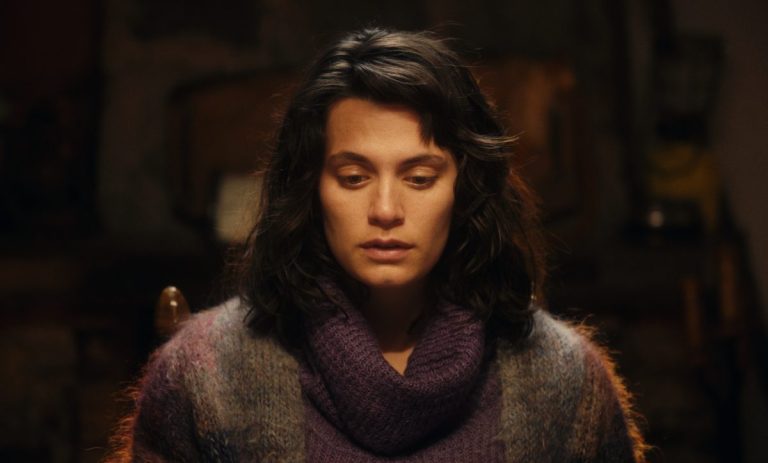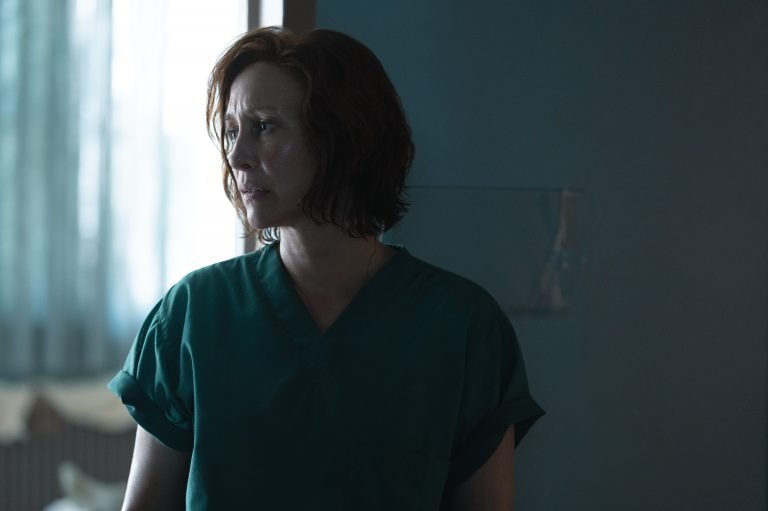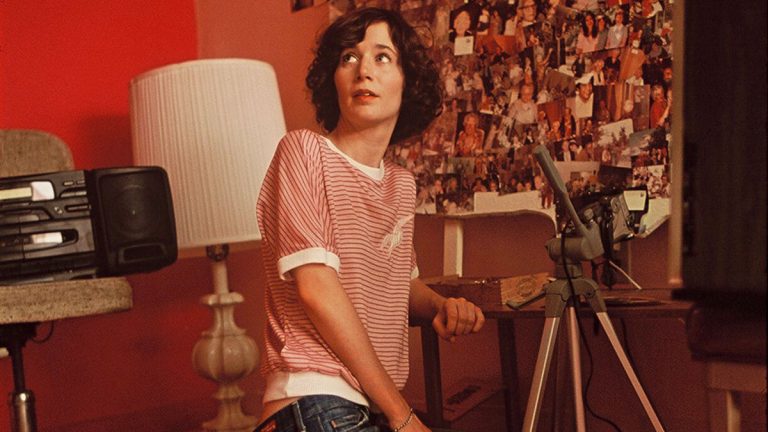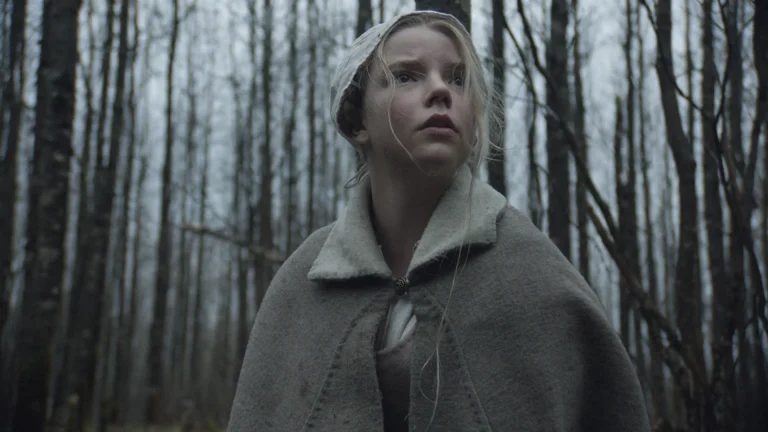How ‘The Exorcist’ Established its Status as an Enduring Horror Classic:
The Origins
William Peter Blatty (1928-2017), the fifth son of Lebanese Catholic immigrants, attended a Jesuit School when he first came across the story of a 14-year-old Mt. Rainier Boy, who was supposedly a victim of demonic possession. An August 20, 1949 article in Washington Post provided Mr. Blatty with further details: from the strange rappings on the walls, projectile vomiting to radical personality changes, extraordinary feats of strength, utterances of Latin phrases, profanity, and levitation.
The Catholic Diocese of Washington, DC, conducted an extensive investigation and determined that this was an authentic case of demonic possession. The papers stated the boy was cured due to the ritual of exorcism. The case haunted a devout Catholic like Blatty. He earned his Bachelor’s Degree from Georgetown University and started pursuing his writing talent in the late-1950s. By the mid-1960s, William Peter Blatty had written four commercially unsuccessful comic novels and worked in various Hollywood scripting projects, including Blake Edwards’ Pink Panther film, A Shot in the Dark (1964).
For the subject of his fifth novel, Mr. Blatty ventured out of comedy. He corresponded with Father Bowdern, the priest who presided over the 1949 exorcism of the 14-year-old boy. Blatty intended it to be a spiritual novel dealing with the crisis of faith. The author himself was undergoing a crisis of faith after his mother’s passing in 1967. Eventually, in 1971, William Peter Blatty finished his tale of a 12-year-old girl’s demonic possession. Though the novel’s initial sale was poor, it’s said that Blatty’s 40-minute appearance at The Dick Cavett Show boosted the book’s popularity. In the following weeks, The Exorcist sold more than 13 million copies. Warner Brothers bought the film rights, and Blatty adapted his novel plus served as the producer.
From Page to Screen
After much deliberations and clashes with the studio executives, William Peter Blatty wanted William Friedkin to direct the film. The little-known Friedkin had directed four movies by the time, and his latest one, The French Connection, was yet to be released in the theatres. Though the studio vehemently opposed Friedkin’s attachment to the project, they relented once The French Connection became a huge success, gaining Friedkin his (only) Best Director Oscar.
William Friedkin, who dabbled with themes of disillusionment, paranoia, and fear, felt that the religious and moral panic at the center of The Exorcist reflected the zeitgeist of the 1970s. As Friedkin mentions in his memoir, ‘their (Blatty and Friedkin) goal was to tell a story about the “mystery of faith” until the film began to win international polls as the “scariest film”….’
Pauline Kael, who was critical of the film, called it: “the biggest recruiting poster the Catholic Church has had since the sunnier days of Going My Way and The Bells of St. Mary’s….” Christian propaganda or not, The Exorcist, over the years, has become the cinematic and cultural reference point for demonic possession tales. It spawned a crowded subgenre of blockbuster horror movies, all allegedly based on true stories, although it’s most often cautionary tales about losing one’s religious faith. Yet apart from being a simple, timeless tale that supports Christian beliefs, The Exorcist remains a potent horror classic due to William Friedkin’s nuanced mise en scene, perfectly punctuated with intense moments of theatrical horror.
Immersing Us into the Anxious Subjectivity of Merrin
A greater struggle between body and soul, between metaphysical good and metaphysical evil, ensues in a 12-year-old child’s bedroom. The story, however, opens by emphasizing this conflict’s largeness and eternal quality. William Friedkin fought tooth and nail to retain the novel’s Iraq prologue. The ten-minute sequence introduces us to archeologist and Father Lankester Merrin (Max Von Sydow), the septuagenarian priest who feels the looming presence of an ‘ancient enemy.’ Shot in the ancient city of Hatra (in northern Iraq), during a real archaeological dig, Merrin stumbles upon the stone amulet of the demon Pazuzu.
Merrin also finds a Saint Joseph medal belonging to a different period, perhaps insisting on the persistent conflict between good and evil. Everything from the loud street noises to the various people Merrin encounters in the oppressive heat becomes a projection of Father Merrin’s innermost fears. A clock stopping at the museum curator’s office, an old lady in a horse carriage, a blacksmith – everything comes across the ill omen in the eyes of Merrin. The old priest’s human frailty contrasts the intimidating atmosphere of the ancient city.
Eventually, he climbs a small hill to confront the Pazuzu statue in the light of the setting sun and frenzied winds. Merrin is positioned lower, looking up at the statue, emphasizing his uphill battle. A menacing soundtrack mixed with the growling of starving dogs further amplifies Merrin’s fearful, premonitory looks. The Iraq sequence is a masterclass in conveying the character’s inner state and trepidation through impeccably orchestrated unsettling imagery. The camera movements are naturalistic and almost feel documentary-like, and yet Friedkin’s impeccable control over the imagery gives us evocative frames that carry a thematic connotation. This is one of Exorcist’s significant strengths, as the filmmaker persistently buries the visual and auditory cues into the recesses of our minds.
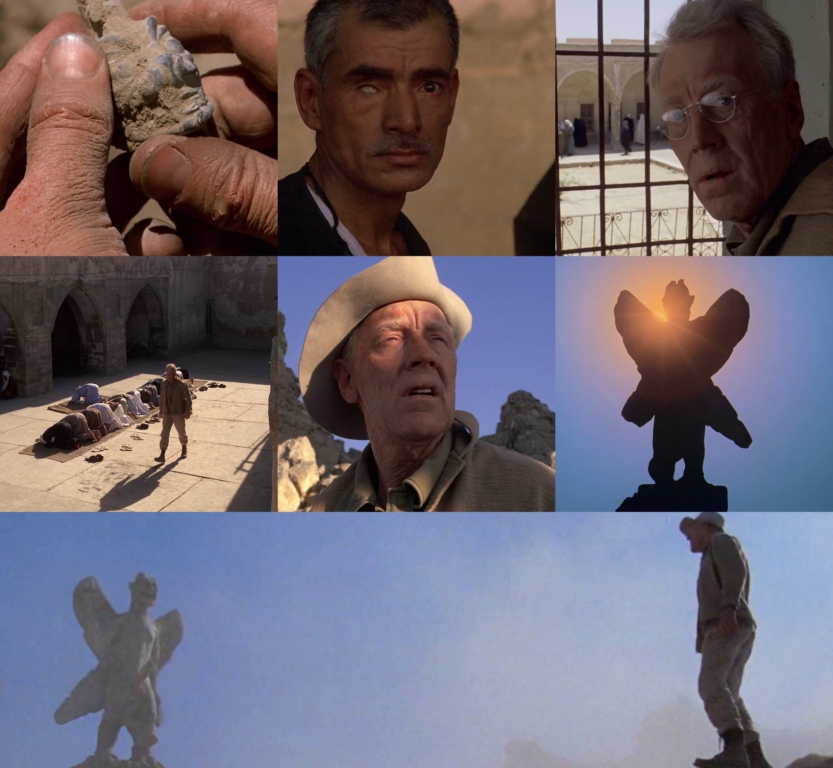
The Oldest Evil in the Modern World
From Iraq, the narrative shifts to Georgetown, Washington D.C., and through characters existing in a state of deep spiritual pain, we witness the devastating, inexplicable events on the screen. Famous actor Chris MacNeil (Ellen Burstyn) has temporarily moved to Georgetown with her 12-year-old daughter Regan MacNeil (Linda Blair). Chris is shooting for the film of her director friend, Burke Dennings (John McGowarn). While going home after wrapping up the shoot at the nearby Georgetown University, she comes across an intense-looking young priest, whom she later learns through a mutual priest friend, is Father Karras (Jason Miller), a psychiatric counselor to fellow Jesuit priests and University students.
Father Karras is wracked with guilt and existential despair after the recent passing of his mother. Earlier in the narrative, when Karras makes a trip to visit his mother, Friedkin brilliantly sets up the sequence to gradually showcase the squalor and decay of the neighborhood where Karras’ mother lives alone. She later dies alone in a hospital bed, and Father Karras finds it increasingly hard to counsel his fellow priests since his faith in God is lost.
The chaos at Chris’ house begins with something mildly annoying, such as the scratching sounds of rats in the attic. The non-religious pragmatist, Chris, finds Regan dabbling with an Ouija board and speaking with a ‘Captain Howdy.’ She perceives it with a sense of amused detachment. Initially, Regan’s erratic behavior is blamed on her age, loneliness, and an absentee father who doesn’t even wish his daughter on her birthday. But when nothing about Regan’s volatile temperament can’t be explained, medical help is sought.
The Medical Order Fails
Simple medical examination and medication pave the way to more extensive and grueling tests, but Regan only becomes worse. In what’s described as one of the disturbing scenes in The Exorcist, Regan endures the arduous process of arteriogram. A fluid is injected into her carotid artery to determine the brain damage. The hypodermic injection, the blood spurt, adds to the unsettling nature of the process.
Eventually, the medical professionals zero in on a lesion in the temporal lobe of Regan’s brain as the cause of the strange behavior. However, to the despairing mother and us, this doesn’t explain the violent shaking of the bed, muscle spasms, pale facial contortions, and disturbing self-mutilation.
Neurologists then recommend psychiatrists, and after rounds of deliberations, a professional suggests one ‘outside chance’ of a cure. He utters the word ‘exorcism.’ If the victim believes in exorcism, why not use the ritual to dispel the notion of demonic possession? The shock on Chris MacNeil’s face is palpable: “You’re telling me that I should take my daughter to a witch doctor?” After an incredible display of inhuman strength, crab walk, and head spinning, Chris concludes that Regan needs that outside chance – a priest.

The Triumph of Christian Faith
Like the doctors, Father Karras understands the suggestion of exorcism, but he himself doesn’t fully believe in the reality of demons and the authenticity of possession. What follows is a showdown between good and evil in the MacNeil house bedroom. Father Lankester Merrin, who has been biding his time to face his ‘old enemy,’ is seen walking in the American woods. He arrives at Regan’s house on one foggy night, silhouetted by an ominous street lamp and light from home (an iconic shot inspired by René Magritte’s painting The Empire of Lights).
The Exorcist’s spiritual message gradually moves toward the ultimate triumph of the Christian faith through determination and sacrifice. At one point, having witnessed the demon’s shocking hold on the vulnerable girl, Father Karras wonders why this is all happening. To which Father Merrin proposes, “I think the point is to make us despair….To see ourselves as animal and ugly. To reject the possibility that God could love us.” The way this sequence was shot and lit – through bars in the staircase with Karras’ face illuminated more than Merrin’s – hints at Father Karras’ inner journey towards overcoming the despair and regaining his faith.
It’s not just Regan; the demon intends to make everyone linked to the possessed girl in the ordeal feel despair. It taunts Karras and challenges Merrin, and grief afflicts the MacNeil household. When Merrin succumbs in his fight with the demon, Karras takes over. In one pivotal moment, the demon exits Regan’s body to enter into Karras. However, with the strength of his newfound faith, Karras overpowers the demon and leaps out of Regan’s bedroom window to his death. He makes the ultimate sacrifice to defeat the evil, although it’s often misinterpreted that the demon caused the priest’s death.
The Exorcist ends on a calm yet hopeful note. Though Regan is said not to have a memory of what happened to her, she acknowledges Karras’ sacrifice by recognizing the collar and robe of Father Joseph Dyer (William O’Malley), the mutual friend of Karras and Chris MaNeil. Regan hugs Father Dyer, who asks her to keep the St. Joseph medal, which Father Merrin unearthed in the obscure site of Hatra. The boarded-up window of Regan’s bedroom and the spooky stone steps is witnesses to Father Karras’ sacrifice and the triumph of Heavenly forces and goodness.
The Quiet Intensity of Friedkin’s Mise en Scene
William Friedkin directed The Exorcist with a documentarian’s sense of realism. Like the Iraq prologue scene or the extended scene of Father Damien Karras visiting his mother, Friedkin creates an eerie atmosphere out of modern life’s familiar chaos and dread. The grounded atmosphere in the earlier portions of the narrative gracefully paves the way for the graphic imagery. This particular sense of realism lends weight to the characters’ experiences. We feel the shock and fear alongside them, dispelling any sense of reservation we might have about the tale’s veracity. Had this story been told from a slightly different perspective, the supernatural phenomena and the potentially cathartic ending wouldn’t have had such an impact on us.
William Friedkin also relied on practical effects to achieve the terrifying moments on-screen. He brought in make-up artist Dick Smith and special effects supervisor Marcel Vercoutere to make the supernatural scenes look believable on-screen. There was no precedent to some of the effects Friedkin was trying to achieve, yet his accomplished crew worked on a trial-and-error method for months. An elaborate set of Regan’s bedroom was built, featuring large air-conditioning units, movable walls, and ceilings suspended with piano wires for Regan’s levitation. Forklifts made of steel were constructed beneath the bed walls to lift and shake the bed.
To make the cold breath of the actors’ visible, cinematographer Owen Roizman set small lights on the set’s floor, focusing on the actors’ breath. A long, thin plastic tube concealed inside Regan’s nightdress for the ‘projectile vomiting,’ and a life-sized dummy of Regan was made and operated by Dick Smith to achieve the head-spinning moment. Eileen Dietz put on the possessed make-up to play the more graphic scenes involving Regan. Furthermore, Dietz’s demonic makeup face flashes on-screen, creating subliminal tricks.
Veteran actor of radio, stage, and film Mercedes McCambridge (All the King’s Men, Johnny Guitar) contributed to Regan’s demonic voice. To achieve the guttural, raspy voice of demon Pazuzu speaking through a teenager, Mercedes McCambridge insisted on swallowing raw eggs, sabotaged her sobriety, and chain-smoked. She was restrained like Regan in some sessions to bring forth the rage and dry wit. Despite going to extreme lengths to create the demon’s voice, Mercedes McCambridge initially declined the credit. But after the film’s phenomenal success, she sued Warner Bros. and eventually received recognition for her voice. Though Linda Blair offered a fantastic, chilling performance as Regan MacNeil, the credibility of her performance was relentlessly scrutinized due to the Mercedes McCambridge episode and Friedkin’s initial misinformation that Blair did all of the scenes.
The Exorcist continues to unnerve the viewers because Friedkin found the balance between visceral, graphic imagery and spiritual substance. Though Blatty’s tale casually dismisses scientific explanations (medical and psychiatric) and exaggerates the nature of supernatural evil, Friedkin’s unparalleled mise en scene enables us to deeply engage with the characters’ emotional and spiritual quest. The success of Blatty and Friedkin’s The Exorcist lies in making us ponder our spiritual beliefs in a ‘what if’ scenario, where we are forced to confront such pure, inexplicable evil.

The Enduring Success of Faith-Based Horror Films
The Exorcist was released in an increasingly secular and modernist America. Of course, religion was still a pivotal element of American culture. But people were losing touch with Christianity, and it is to this audience the faith-affirming tale of demonic possession was directed at. The claims that the production was haunted and the hysteria surrounding the film’s release ensured The Exorcist’s lionization of the Christian faith. Before the film’s release, the notion of exorcism was rarely discussed outside the inner circles of the Catholic Church. But the hysteria and paranoia following the film’s release increased the self-proclaimed cases of alleged demonic possession.
Hollywood, as usual, tried exploiting the success of The Exorcist with sequels and later a prequel, but nothing repeated the triumph of the original. But faith-based horror continued to be a separate sub-genre. The Exorcism of Emily Rose (2005), The Last Exorcism (2010), The Rite (2011), The Possession (2012), The Conjuring Trilogy (2013, 2016, 2021), The Pope’s Exorcist (2023) – the list of movies with template on-screen demonic hauntings continue to reap substantial box office numbers. Nevertheless, almost all these films peddle a grossly Hollywoodized narrative of an alleged actual incident. While the innovation in film technology has made the on-screen rendering of possessions increasingly spooky, the modern faith-based horror neither has the grounded atmosphere nor the compelling drama of William Friedkin & William Blatty’s The Exorcist.
Influences of The Exorcist can be seen in recent Asian horror flicks like The Wailing (2016, South Korea) and The Story of Southern Islet (2021, Malaysia), where the focus is more on the mastery of tension and atmosphere. Furthermore, such films touch upon the alluring mysteriousness of spiritual conflict, like the precedent set by The Exorcist. Perhaps, the greatest trick the two Williams ever pulled is convincing us that the devil does exist, and within such clear-cut terrifying reality. Alas, the devil we know is more elusive. It’s called the banality of modern life.




